The Boaty Project was all about involving people – not just from our own villages, but from the wider community. We welcomed everybody with an interest and time to spare to visit the archives, walk along the canal route, be interviewed, and of course, to come along to talks and meetings.
- Some of the project managers
- Allan leads the walkers
- Steve presents “The Boaty Show”
- Ginny behind the video camera
- Lesley interviews John Smith
At the centre of these activities there was a project team to provide the infrastructure. They co-ordinated the project, organised the activities and developed the deliverables – the catalogue, the photographic archive, the interpretation boards, the walk brochure and the web-site. No-one had worked together or undertaken a project quite like this before; but with plenty of cups of tea and an abundance of skills and professional experience, it was a very successful team. More people got involved to help with specific jobs, such as photography, leaflet design and interviewing. Everyone’s contribution made a difference and enabled us to complete the project to the full satisfaction of the Heritage Lottery Fund.
Here are “All our stories”! (in alphabetical order).
Maggie Ashcroft (Project Leader)
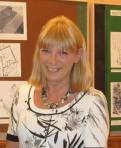 Maggie was Project Coordinator for Resource-based Learning Development at a large secondary school in Cambridgeshire before her retirement. Her career as a professional librarian included posts in public libraries, the British Institute of Management, contract research and consultancy in library and information service management. She now spends most of her time on community and heritage-related projects and is chairperson of the village Heritage Group.
Maggie was Project Coordinator for Resource-based Learning Development at a large secondary school in Cambridgeshire before her retirement. Her career as a professional librarian included posts in public libraries, the British Institute of Management, contract research and consultancy in library and information service management. She now spends most of her time on community and heritage-related projects and is chairperson of the village Heritage Group.
On the Boaty Project Maggie’s particular responsibility was to organise visits to archive collections and catalogue all the information and resources collected for the project. Interpretation and presentation in various formats – for displays, for the interpretation boards, for the leaflet and for the website – are on-going responsibilities.
Paul Bragg
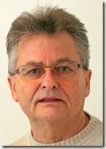 Paul started work at the Handley Page aircraft company in North London and worked as a toolmaker for a number of companies before going into partnership in a French Polishing company. Then for some 30 years he worked for a London restaurant group, managing restaurant and nightclub refurbishment and maintenance.
Paul started work at the Handley Page aircraft company in North London and worked as a toolmaker for a number of companies before going into partnership in a French Polishing company. Then for some 30 years he worked for a London restaurant group, managing restaurant and nightclub refurbishment and maintenance.
Photography has played a major part in Paul’s life. He was a president of two London camera clubs, and a competition judge on the London and East Anglian photographic circuits. Since moving to West Deeping in 2009 he has been photographing village life, including Open Gardens 2009, a Summer Fete, and the Queen’s Jubilee celebrations.
He was pleased to help with the Boaty project and was responsible for the photographs used on the four interpretation boards in West Deeping and Tallington. He superimposed and edited photographs of the village enclosure maps, onto aerial photographs of the area (taken by a specialist). He says it was a challenge and a real pleasure to be involved.
Ginny Cook
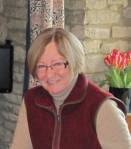 Ginny worked for Pearl Assurance (owned by an Australian company AMP) on a contract basis during the 1990s. Prior to this she worked in Sydney, Australia for a computer consulting company and for AMP during the 1970s and 1980s. She now breeds and rides dressage horses.
Ginny worked for Pearl Assurance (owned by an Australian company AMP) on a contract basis during the 1990s. Prior to this she worked in Sydney, Australia for a computer consulting company and for AMP during the 1970s and 1980s. She now breeds and rides dressage horses.
Her work was mainly within large computer and business projects. Her roles spanned strategic planning, project planning, quality assurance, business analysis, data analysis and writing key reports.
On the Boaty Project Ginny established the detailed project plan, performed a metadata analysis from which she created the Boaty Catalogue using an Excel spread-sheet. She created the West Deeping Heritage Group web-site and filmed and edited the walks and John Teesdale’s interview. She provided general technical backup for the project team.
Steve Cook
 Steve’s career includes various executive positions with fund management companies in UK & Australia. With Prudential Portfolio Managers, Steve was Managing Director of the Pru’s UK retail fund business and Chief Executive of PPM Australia. Prior to that Steve was with the Australian firm AMP Asset Management Ltd working in various roles in Sydney and London.
Steve’s career includes various executive positions with fund management companies in UK & Australia. With Prudential Portfolio Managers, Steve was Managing Director of the Pru’s UK retail fund business and Chief Executive of PPM Australia. Prior to that Steve was with the Australian firm AMP Asset Management Ltd working in various roles in Sydney and London.
On the Boaty Project Steve contributed to the design of the interpretation boards and the walk leaflet as well as providing general assistance to the project team in project planning and organisation.
Allan Crowson
 Allan Crowson has lived and worked in the Stamford area for all of his 70 years. He was educated at Barnack C of E School and Arthur Mellows Village College Glinton. He studied motor vehicle engineering for 5 years at Grantham College for Further Education.
Allan Crowson has lived and worked in the Stamford area for all of his 70 years. He was educated at Barnack C of E School and Arthur Mellows Village College Glinton. He studied motor vehicle engineering for 5 years at Grantham College for Further Education.
He was employed at agricultural machinery dealerships based in Stamford and Bourne from which he serviced and repaired a wide range of agricultural and horticultural machinery and commercial vehicles. He has lived in West Deeping since 1972.
He has had a lifelong interest in rural affairs and local history. As a founding member and treasurer of the West Deeping Heritage Group he has been an enthusiastic member of the “Boaty Project” team. He has been involved at every stage during the project. He organised and led walks to trace and photograph the remains of the Stamford Canal over its entire length and contributed to the planning of the interpretation boards and leaflets.
Liz Noble
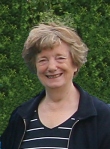 A career in education, including nearly 20 years as a headteacher, has allowed me to share with children my interests in history (especially local history), environmental studies, music and the arts.
A career in education, including nearly 20 years as a headteacher, has allowed me to share with children my interests in history (especially local history), environmental studies, music and the arts.
Retirement has given me time (never quite long enough!) to play for church services and indulge my passion for watercolour painting and gardening. Being a school governor keeps me in touch with children and education. I am kept busy by my family and maintaining my small flock of rare breed Lincoln Longwool sheep, inherited from my late husband.
Taking an active part in the West Deeping Heritage Group is a very rewarding way of interacting with the village and wider community. The Stamford Canal project has been a wonderful opportunity to use my creative skills and help to tell the story to all age groups.
Richard Platt
When I started work as a teacher at Deeping St James Primary School in 1970, my daily cycle ride from Peterborough took me over the old stone bridge. I noticed the date 1651 and the river lock further upstream. Being from Huddersfield and later Nottingham I was very familiar with canals and became curious about the River Welland.
When I started to teach year 6 in 1974 we did a project on the river at Deeping: I read Florence Day’s History of the Deepings which mentioned the Stamford Canal; I wrote to Stamford Town Hall for information from their archives; from the House of Lords Record Office I was able to obtain copies of the 1571 Act and the 1662 Charter which established the canal and granted to the town of Stamford the right to hold it, for the King, forever. I also discovered that there was no Act of Parliament closing the Canal so it is still a legal waterway! I photographed the canal from Low Locks Deeping St James to Hudd’s Mill in Stamford and the canal’s exit from the River Welland. I was able to build up an extensive teaching resource about the Stamford Canal enabling me to fill in much detail of the history of the waterway. I took my class on walks from Stamford to Deeping along the canal’s route; I even gave talks to local history groups. A result of this was a short television piece for Central TV in 1983. I collaborated in writing a short history book with the Deepings Heritage Group.
Now my interest is in the early years of the canal 1571 to 1663 when it first began to take traffic. There are so many unanswered questions – who surveyed the course? who decided to use Leonardo da Vinci’s lock design? who did Stamford employ to dig the canal in 1620, etc etc? The canal is my abiding historical passion, for it is without doubt the first industrial canal in England and the model for the much-later Bridgewater Canal
Lyall Seale
Lyall Seale had a career of 40+ years as a civil and environmental engineer, working on projects large and small in the UK and abroad, many associated with water. Retirement in 2010 allowed him time to develop his long term interest in history and maps. He has been involved in research for St Guthlac’s Church, Market Deeping and on the life of St Guthlac and his time in history. In 2011 and 12, he was a member of a group carrying out visual surveys of the condition of Listed Buildings in the Deepings to develop a status record for Lincolnshire Heritage at Risk. His involvement in the Boaty Project has been in research on maps, providing a record of photographs along the route of the Canal and Navigation, current and historic, and developing the map to show these on the website.
Philippa Swanborough
Philippa left Stamford Art College as a qualified Graphic Designer in 2003. With a keen interest in magazine design, following only a week’s work experience for EMAP (East Midlands Allied Press) she was offered the role of Graphic Designer to the Sea Angler magazine. 11 years later Philippa is still working in Peterborough for Bauer Media as Art Editor for Trout Fisherman magazine.
Having moved to West Deeping when she was 18, she eventually moved to Tallington with her young family a couple of years ago and was keen to get involved in a project that spanned both villages where she has very close connections. Using her knowledge of graphic design and magazine layout Philippa worked with the project group to produce the Stamford Canal leaflet, detailing the route and history of the canal between the two villages.
Lesley Ward
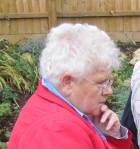 I have lived in West Deeping for the last 17 years and am now retired. Before raising my two children I trained and worked for 20 years as a Social Worker. I have been researching my family tree and through this became involved with the West Deeping Heritage Group and in particular the canal project.
I have lived in West Deeping for the last 17 years and am now retired. Before raising my two children I trained and worked for 20 years as a Social Worker. I have been researching my family tree and through this became involved with the West Deeping Heritage Group and in particular the canal project.
Due to my social work experience I felt that oral history was an area in which I could help. A day course at Leicester University run by the East Midlands Oral History Archive provided some good advice on interviewing techniques. It involved contacting and then informally interviewing and recording people in West Deeping and Tallington. In most cases they had passed-down stories and information. A few had grown up in the village, some live in properties where the canal runs through their gardens and some have only recently moved into the area. As the canal stopped being used around 1865, nobody we interviewed, of course, could provide us with first-hand information!






